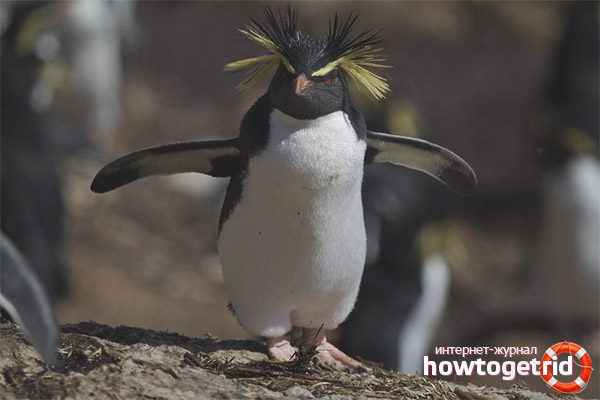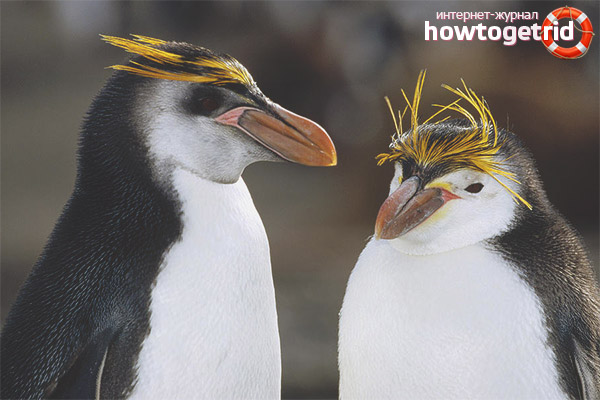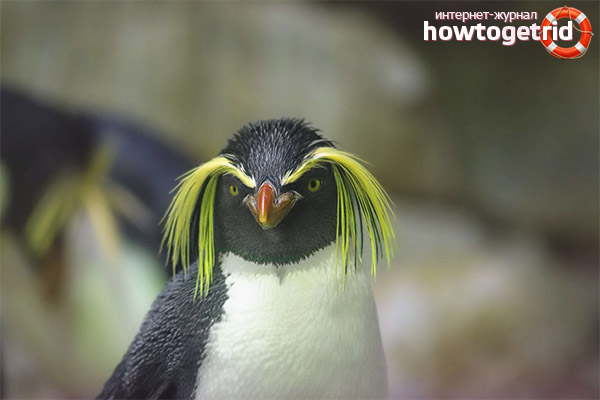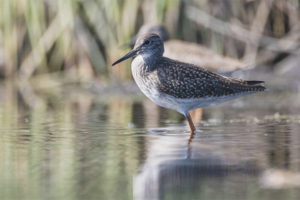The content of the article
Antarctica is the only continent on earth where frosts constantly rage. But even in such conditions, unacceptable to many animals and birds, there is life. The most famous inhabitants of this always cold mainland are penguins. There are already 18 species - royal, imperial, small, spectacled. Everyone knows these graceful funny birds wearing a tailcoat. But few people know that they live not only on the southernmost continent of the planet, but also in the more northern regions, in the so-called sub-Antarctic zone, and even in the south of North America. One of them is a crested penguin.
Description
Crested penguins (climbers) are divided into three species: northern, southern and eastern. The North lives on the Amsterdam Islands, the South on the Chilean and Argentinean coasts,
All of them are small in size - up to 55-57 cm long, weigh about three to four kilograms, but during the molting period they recover and become 2-3 kilograms heavier. The back, small head and wings are black, along the edge of the wings there is a black stripe, and the throat, chin and cheeks are white. The body is covered with small feathers, consisting of the same rods, up to 3 centimeters in length, on the crown they are slightly more authentic.
The eyes are dark red in color, very small, with narrow yellow eyebrows above them, from which two crests stretch to the crown, giving the bird a name. The thin black beak is long enough, pointed at the end. Short thick legs are almost completely enclosed in the skin of the body, so the steps are short and as if jumping. There are four fingers on the feet, three of which are connected by a membrane. Males and females differ only in size - males are larger.
Spread
Lifestyle and habits
Crested penguins are completely unsuitable for a single lifestyle, they are combined into huge colonies of more than 3 thousand individuals. They like to live not only on the sea coast, but also on rocky ledges, choosing sites near fresh water reservoirs, as they need to drink. On those islands where there is a lot of soil, they even dig minks and nesting niches. They communicate with each other, making loud noises. And during the mating season around the colony stands incessant whine. Despite the good-natured appearance, they are aggressive towards strangers and uninvited visitors. Seeing the intruder, they begin to yell heart-rendingly, bouncing and stomping. At the same time, twitch their shoulders, open their eyebrows, spread their wings and lower their heads menacingly. If a stranger does not want to get out, the defender starts to fight - he hits his head, wields wings, pokes with his beak.
In relation to each other are always friendly and good-natured. When meeting with lovers, the males stomp, scream enthusiastically and pull their neck towards their girlfriend. Females show the same response feelings. Active during the day, sleeping at night.
Breeding
The mating season begins depending on weather conditions - from June to December. In order to get a female, literally, a fight begins between men. Two pretending males stand opposite each other with their wings spread wide, beat each other with their heads and bubble loudly piercingly, trying to intimidate the opponent. The winner of the tournament sings loudly, proving to his future wife that he is good and exemplary, and when the female succumbs to "persuasion", a family is formed.
The nest is completely equipped with a male.The house is being built in an excavated hole made of branches, pebbles and grass. In October, the female lays 2 greenish-blue eggs: the first is small, the second is a little larger. As a rule, the little one dies, and the female lays one egg for almost a month, after leaving the nest and all the worries fall on the shoulders of the head of the family.
He hides the egg in one of the folds on his stomach and does not part with it for 4 months, until the cub appears. The baby is born, the mother comes and begins to feed the chick, belching food. Young children are given up for education in the so-called “kindergarten” - a colony of the same young chicks, where they learn all the wisdom of life. At this time, parents get their children food. At 10 - 12 weeks of age, molting takes place in young people, they become like adults and already swim in the sea themselves and seek food.
Nutrition
Crested penguins get their food at sea, preferring animal food: crustaceans, shrimps, small fish such as sardines and anchovies, mollusks, catch small octopuses and squids.
Interesting Facts
- Penguin is the only bird on Earth that can not only fly, but also stay in the air.
- It differs from relatives of other species in that it can move its tufts back and forth.
- Long live - 25-27 years.
- They can drink sea salt water without suffering from excessive salt - excess is secreted through special glands over the eyes.
- Male penguins are very faithful husbands, with their chosen female they live their whole lives. But, if returning to the nest, the owner did not find his own female, but another penguin, then entered into an intimate relationship with her, without waiting for his wife.
- Crested penguins swim great, developing a speed of about 40 kilometers per hour. Since the wings do not fulfill their flying function, the birds adapted them instead of fins, with the help of which they move in the water. Legs with a tail serve instead of the helm.
- The plumage in three layers saves from penguin colds, and the air between the rows of feathers helps to maintain heat while in the water.
- At least half of the time the penguin spends in the water, getting food.
- During molting and feather changes, which lasts up to 100 days, penguins have to be on land all the time without food. Many birds during a forced diet become twice as lighter and eat only due to the accumulated fat layer.
- Penguins have a very weak sense of smell, which only benefits them - they don’t feel uncomfortable with the smell of a huge amount of droppings accumulating in the colony.
Video: 10 facts about penguins












Submit